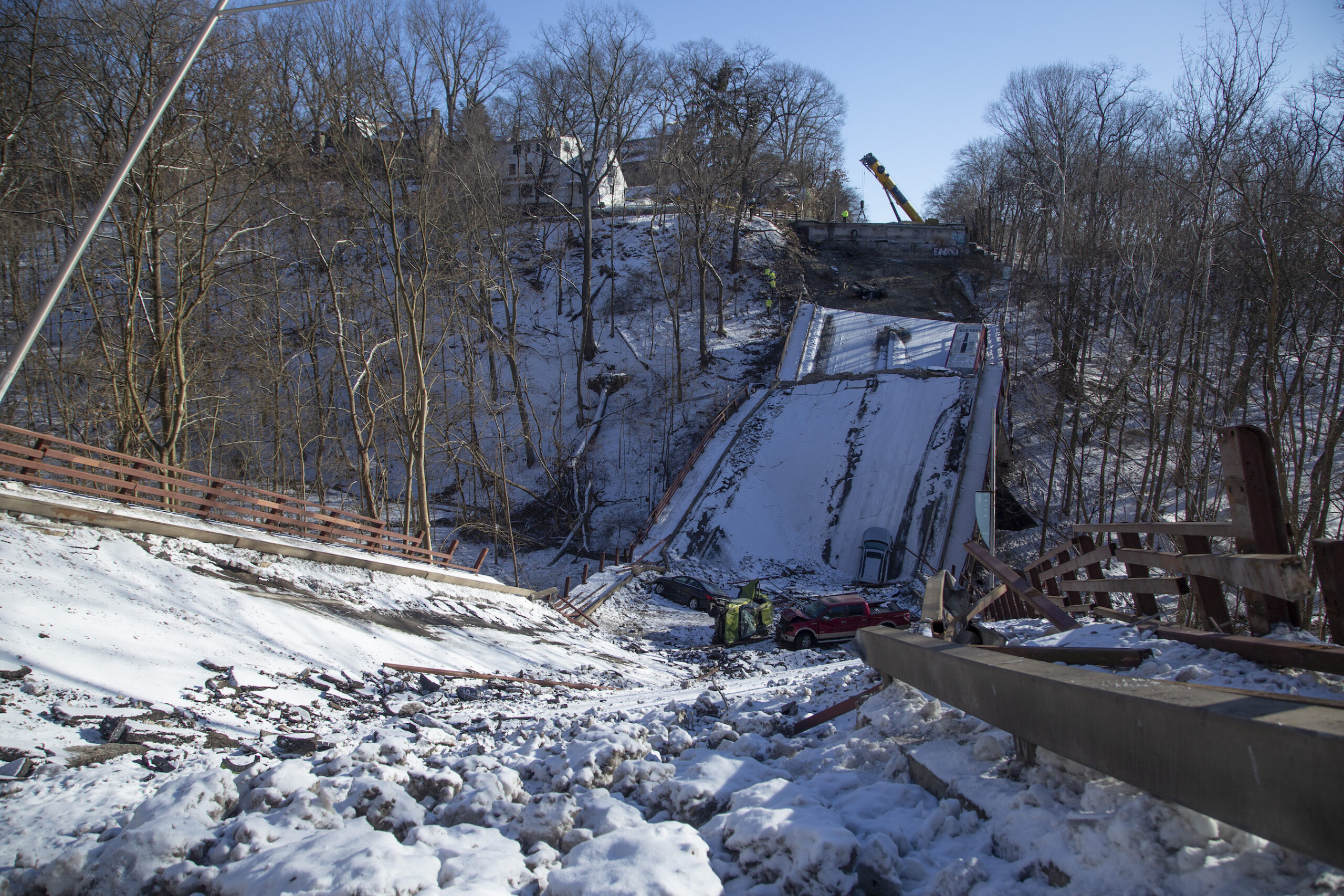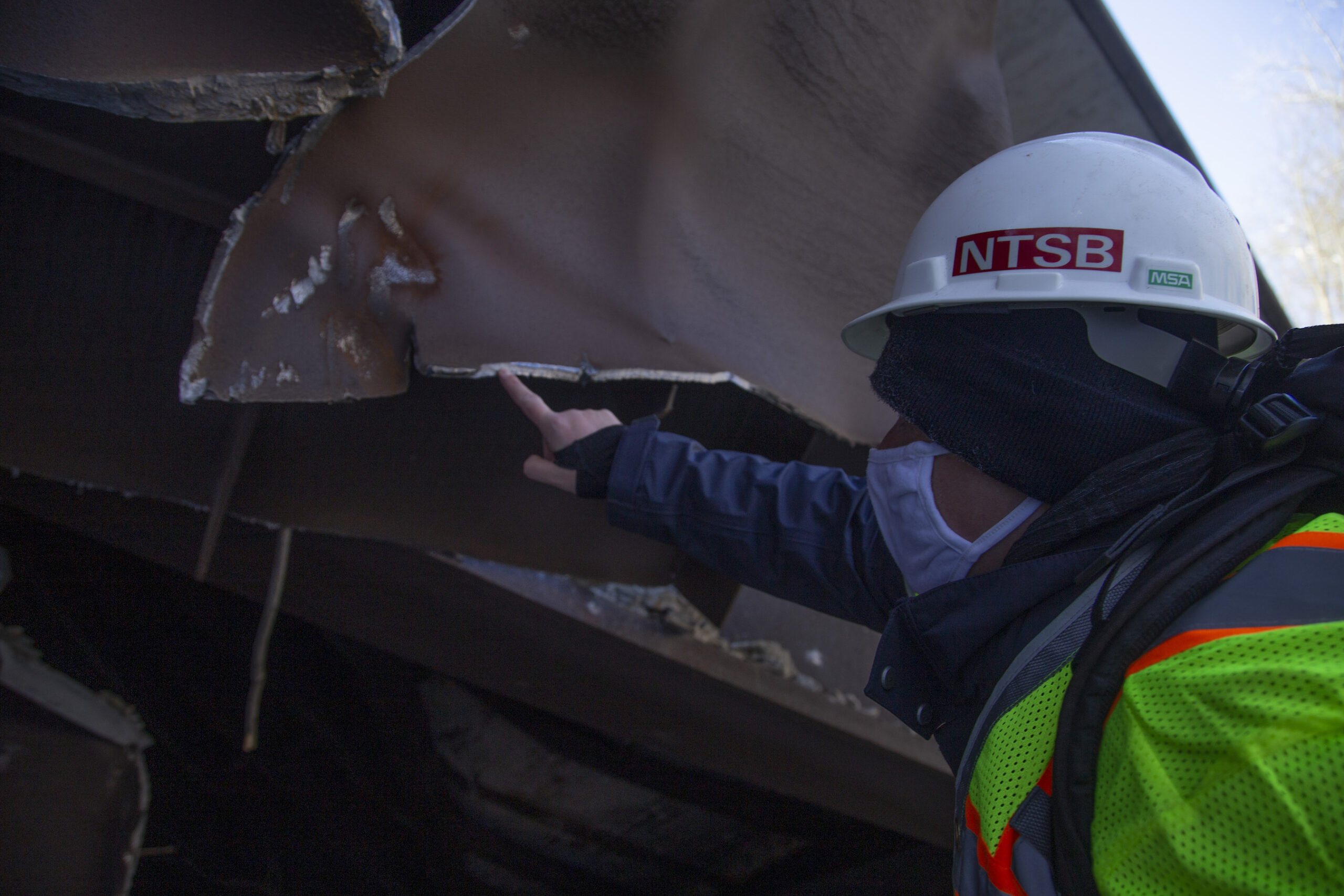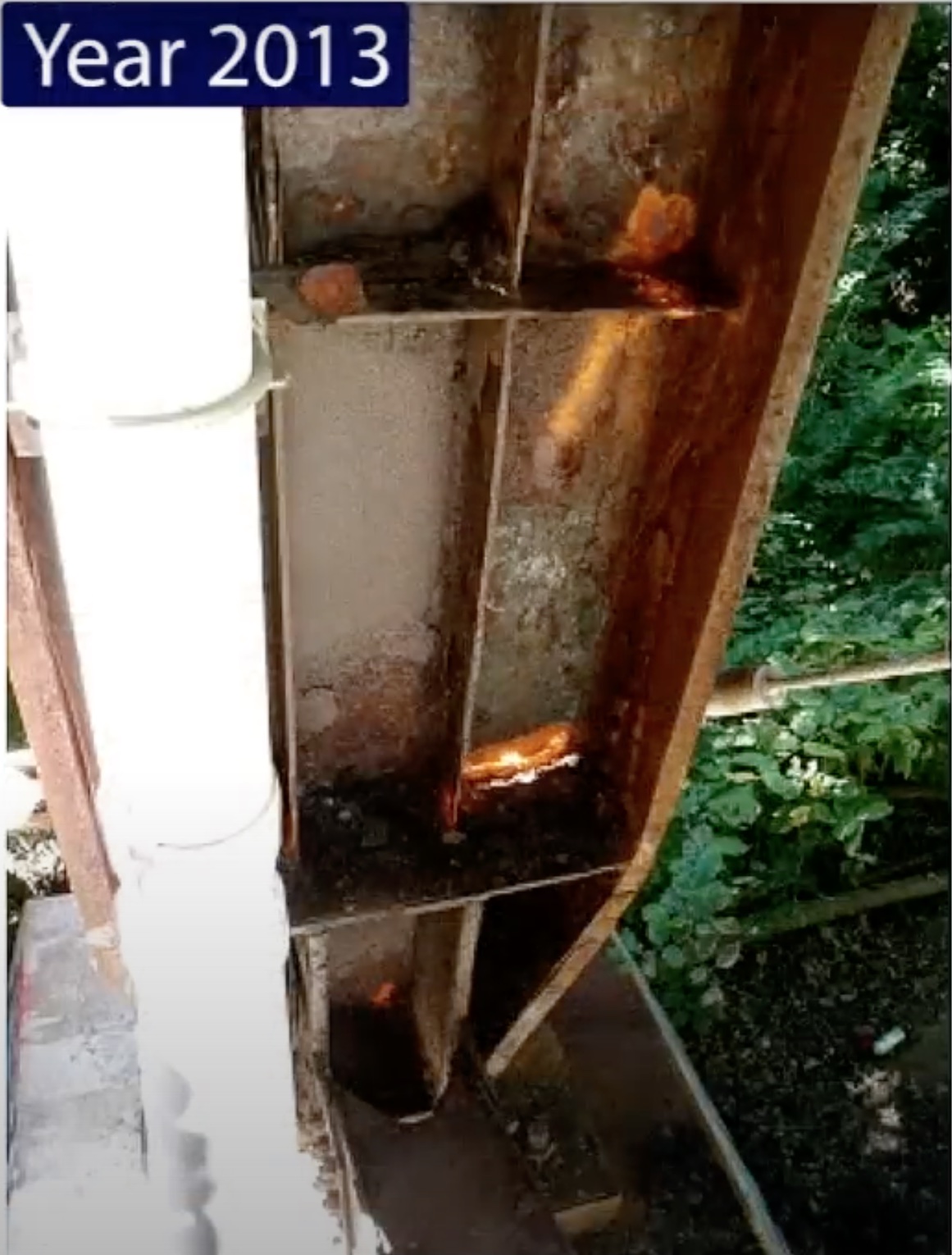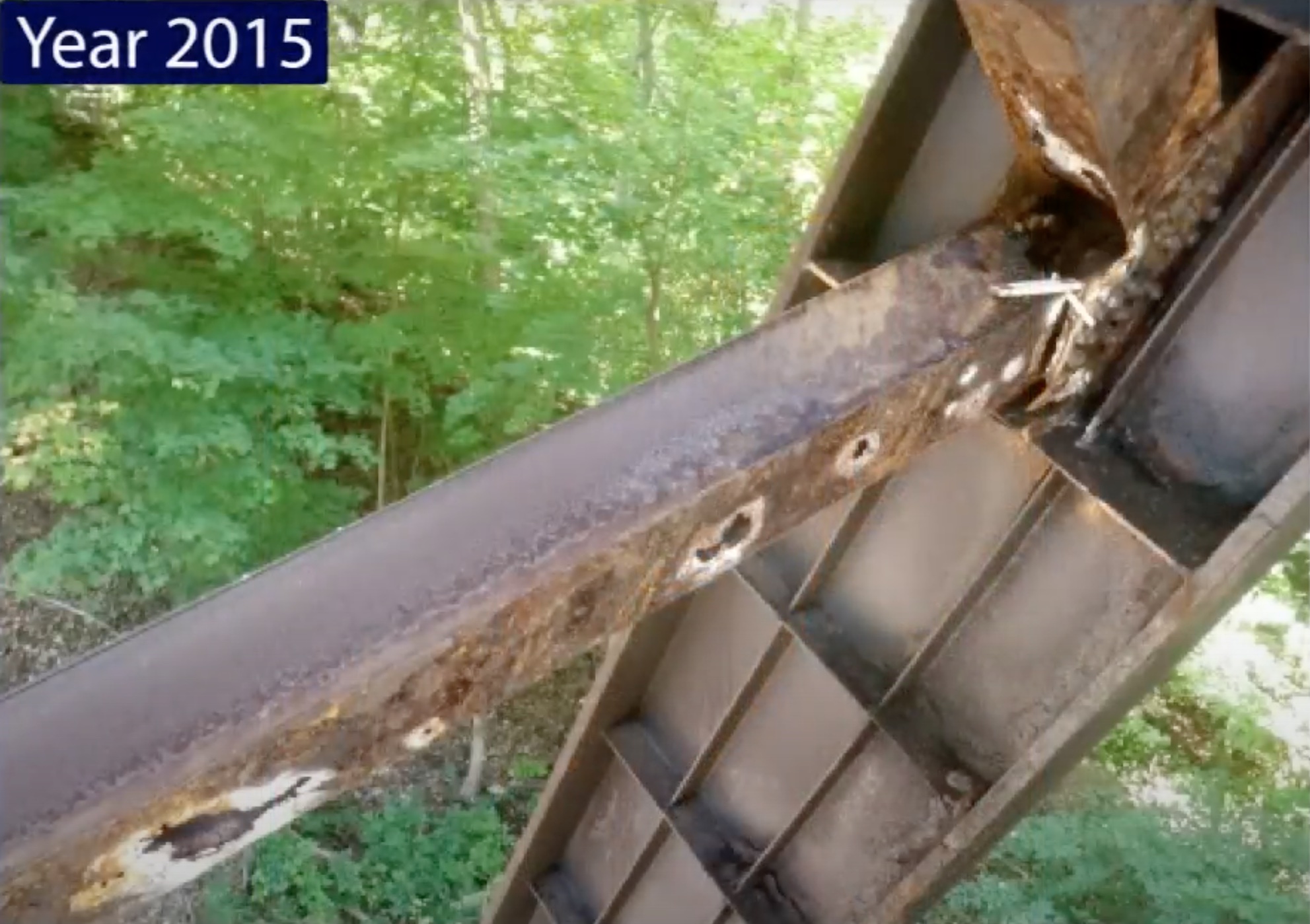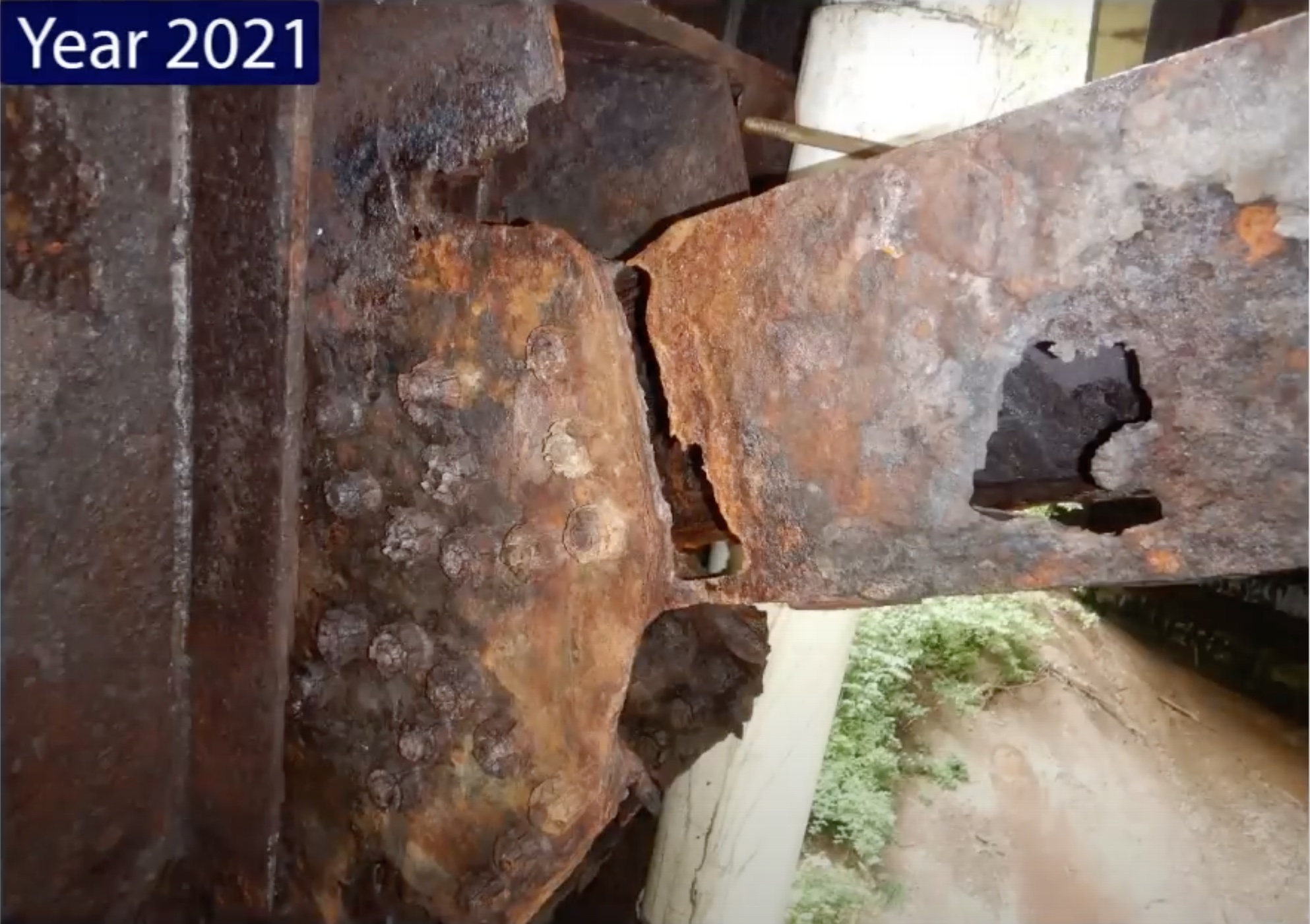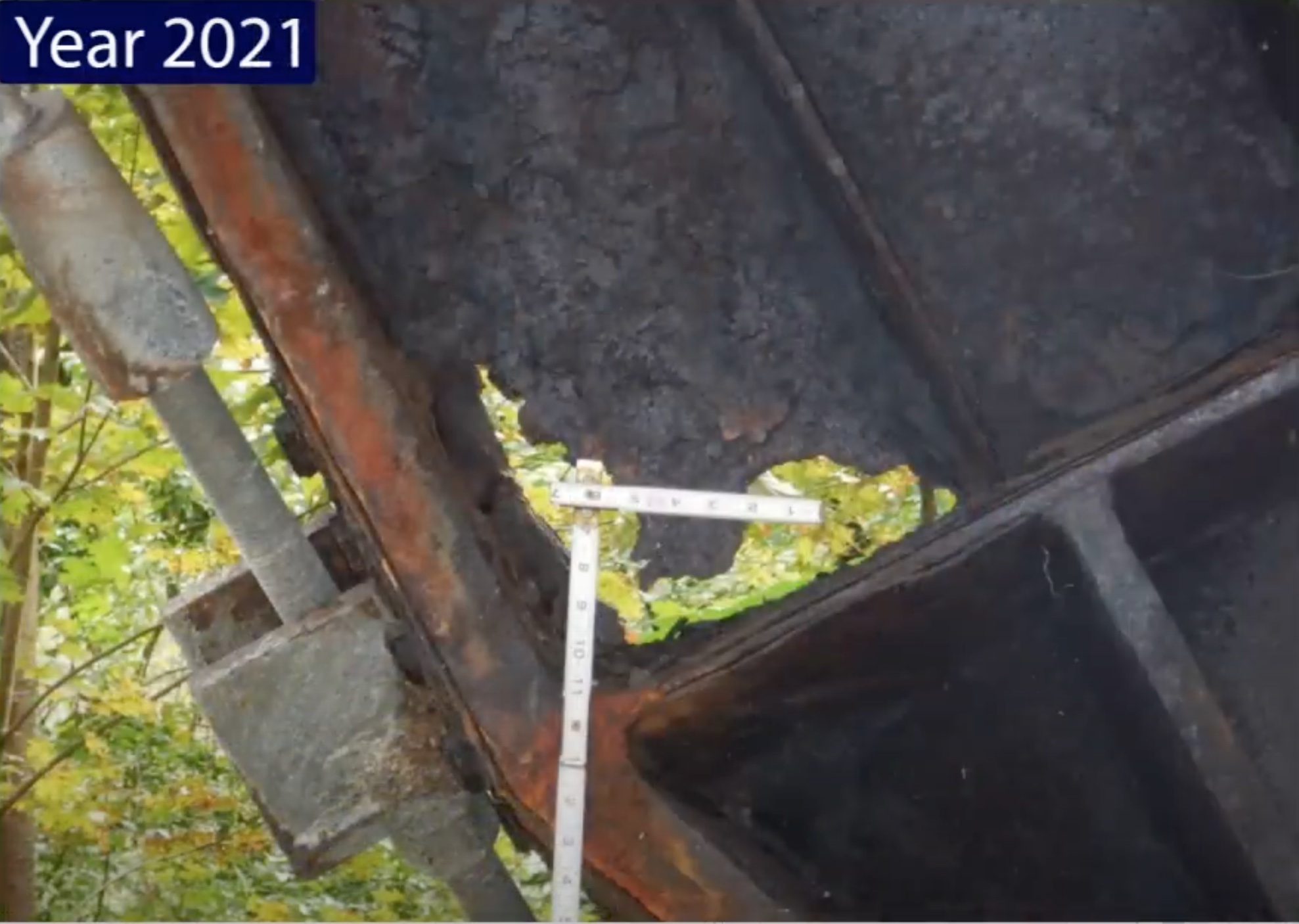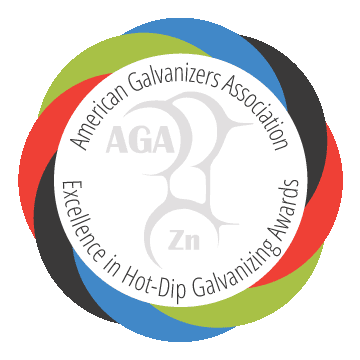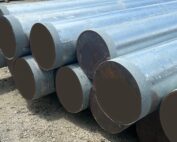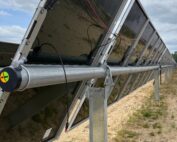During the early morning hours of a snowy Friday, January 28, 2022, Pittsburgh, Pennsylvania was rocked by the unexpected: the massive structural failure of a commuter bridge located in the city’s Frick Park. At approximately 6:30 a.m., the 447-foot bridge collapsed, falling over 100 feet to the ground below.
After a thorough investigation, the National Transportation Safety Board determined the cause of the Fern Hollow Bridge collapse to be the failure of a transverse tie plate on the southwest leg of the bridge. Extensive corrosion of the uncoated weathering steel structure was the main factor in this failure.
A local transit bus and five other vehicles were traveling across the bridge at the time of the cave in. Fortunately, there were no fatalities, though several citizens were injured during the event.
Built in 1973 of “weathering steel,” it was not treated to prevent rust and decay. It suffered significant corrosion and section loss over just 49 years from normal exposure to elements such as rain, snow, salt and extreme temperatures, plus a continual accumulation of water and debris in critical areas, due to a lack of maintenance.
By contrast, the time to first maintenance for ASTM A123 hot-dip galvanized steel is more than 70 years in even harsh environments. Time to first maintenance is defined as 5% rusting of the steel surface.
Analysis of steel structural elements of the bridge after collapse showed 50% or greater section loss in many areas, including some 100% loss where the steel had completely rusted away. This greatly reduced the weight-load capacity of the bridge.
The investigative report published by the NTSB this year cites that maintenance and repairs needed to keep the weathering steel structure safe were not performed.
Although repeated maintenance and repair recommendations were documented through years of inspection reports, the city didn’t act on them, leading to continued deterioration of the fracture-critical transverse tie plate and the structural failure of the bridge.
In addition to multiple injuries, the unexpected construction of a new replacement bridge – not made of weathering steel – had to be expedited at a cost of $25.3 million.
One simple and cost-effective way to avoid this type of catastrophe is the use of hot-dip galvanized steel. Unlike weathering steel, galvanized steel is protected by a strong anti-corrosive layer of zinc. This prevents the rust and deterioration that inevitably affects weathering steel, and provides decades of safety, and savings in maintenance and repair costs.
While weathering steel remains in use in some places, largely because of localized aesthetic preferences, it is not recommended in any areas that receive eight or more inches of annual precipitation, as this greatly reduces its safety and longevity.
According to the most recent available American Community Survey (a yearly review conducted by the U.S. Census Bureau) average annual precipitation in the United States was 30.28 inches, with the highest recording state receiving 59.15 inches of precipitation and the lowest recording state receiving 9.46 inches of precipitation.
Based on this data and evidence from the Fern Hollow Bridge collapse, the use of weathering steel in infrastructure projects should be limited.
